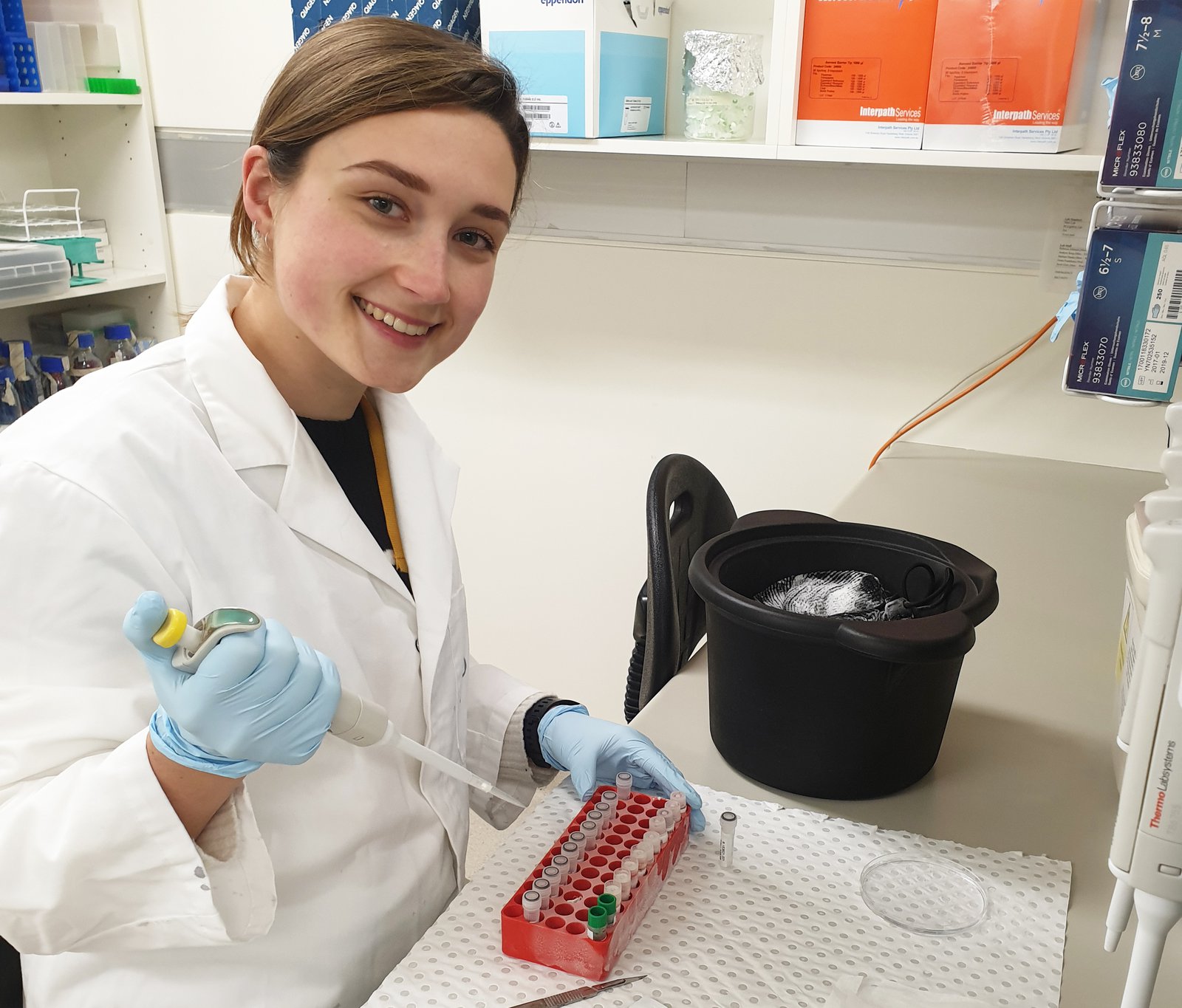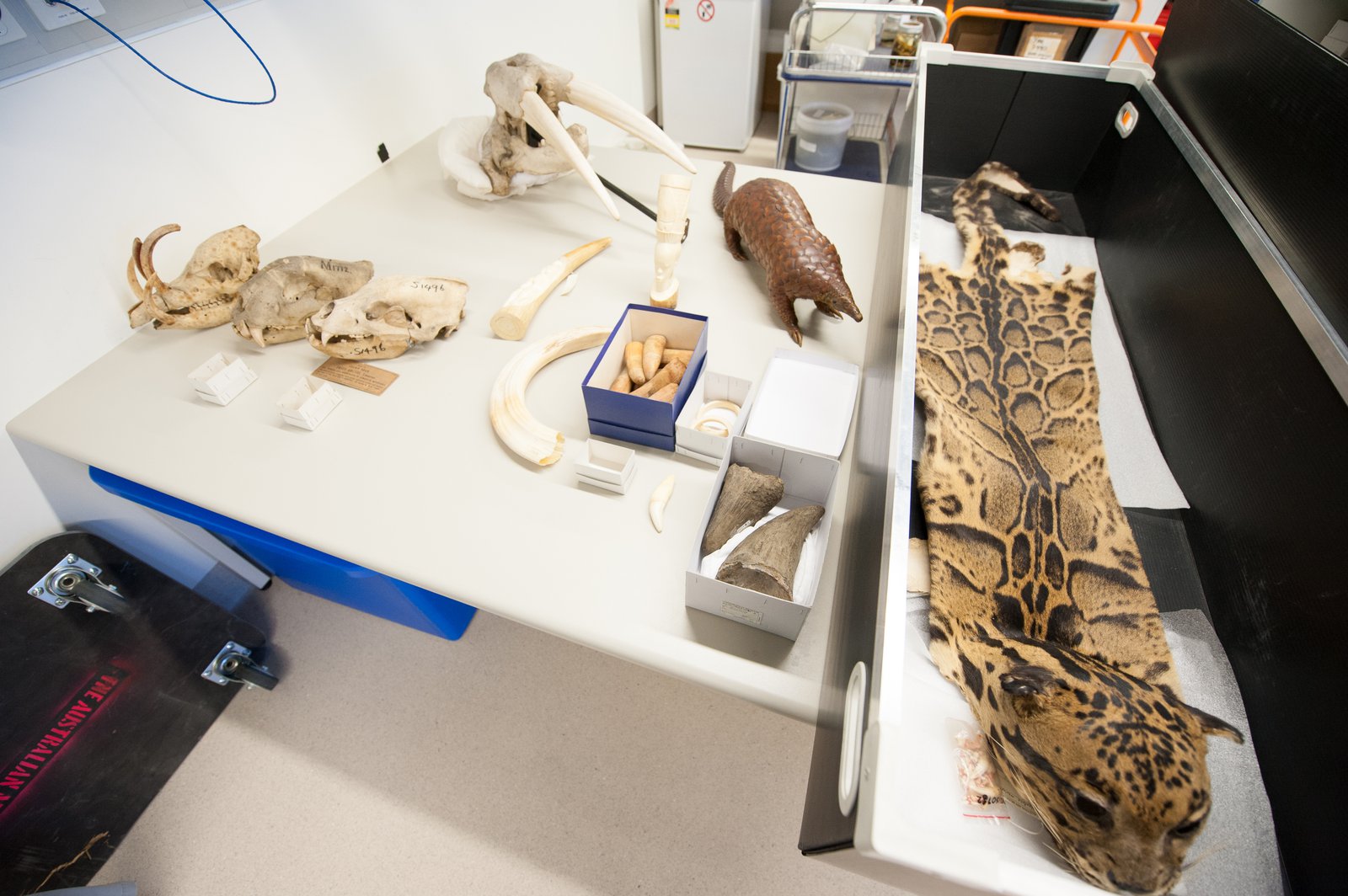Test tubes, tissue and tigers: an internship at the Australian Centre for Wildlife Genomics

© Australian Museum
For three weeks in June and July, I had the incredible opportunity to work alongside and learn from industry leaders in applications of wildlife genomics as an intern at the Australian Centre for Wildlife Genomics (ACWG). I decided to undertake this internship to deepen my understanding of scientific research that I have developed during my studies as an Advanced Science student at UTS.
Every day is different at the ACWG. I was exposed to the incredible diversity of the roles of ACWG and how the team works towards improving conservation prospects of many native Australian animals.
I was able to observe the Museum’s Wildlife Airstrike program in action as I assisted in preparing airstrike samples for DNA extraction and creating DNA sampling kits to send to airports. Through this program, ACWG provides DNA identification for wildlife strikes to improve conservation programs in place at Australian airports.
I also worked on a project that involved updating labels on some of the older samples in the Museum’s Frozen Tissue Collection. The extensive collection is comprised of over 80,000 specimens from all over the globe, so it was amazing to witness some of the diversity of the collection through this project.

© Australian Museum
I was tasked with the challenge of identifying species from six unknown tissue samples. I was able to work through the species ID process used every day at the ACWG, including DNA extraction, polymerase chain reaction (PCR), gel electrophoresis, interpreting DNA sequences and creating phylogenetic trees. Due to the unique location of ACWG being part of the Australian Museum, I was able to visit the tiger in the Wild Planet exhibition whose tissue I worked with during this process. This was an eye-opening experience and added another dimension that could not have been achieved anywhere else. The species ID process was an enjoyable and interesting experience as I gained exposure to fundamental lab techniques and practices that I can apply to my studies and future career.
The research being undertaken at ACWG is dynamic and exciting. From marsupials to microbats to mynas, there is always something fascinating being investigated in the lab. I was lucky enough to participate in a field trip to the Department of Agriculture and Water Resources where I helped sample over 100 reptiles for an internal project, a truly one-of-a-kind experience!
As a result of my internship at the ACWG, my appreciation for scientific research has evolved. The experience and knowledge I have gained was delivered in an environment that I would not have been exposed to anywhere else. The iconic location, passionate staff and impressive collection makes ACWG a very special place to work and an invaluable asset for Australian (and global) conservation efforts.
Acknowledgements
I would like to thank the ACWG team for providing me with a truly rewarding experience as an intern. In particular, Dr David Alquezar, Andrew King, Scott Ginn, Dr Greta Frankham and Caitlin Morrison for their time, expertise and passion for what they do. Because of this team I now have a greater appreciation for the applications of wildlife genomics and their importance.









